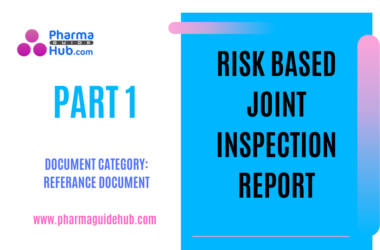Que 1: What is the clean room?
Answer: Clean rooms are defined as especially constructed, environmentally controlled enclosed
spaces with respect to airborne particulates, temperature, humidity, air pressure, air
flow patterns, air motion, vibration, noise, viable (living organisms) and lighting.
Particulate control includes:
- Particulate concentration & dispersion
- Particulate & microbial contamination
Que 2: What is the list SOPs required in QA department?
Answer: SOP for SOP, SOP for format preparation, change control, deviation, Non-conformance products, market complaints, product recall, returned goods, vendor qualification, preparation of BMR & BPR, Assigning of Mfg. date & Expiry date, annual product review, corrective action & preventive action, process validation, cleaning validation, equipment qualification, glossary of terms, document control, Review of BPCR & analytical test report, batch numbering system, labeling practice, personnel training, BPCR issue and
retrieval, batch release, self-inspection (internal audit), file numbering system,
preparation of organo-gram, preparation of COA, specimen signatures, Reprocess &
rework of intermediates/API, Job responsibilities, Technology transfer, measurable
quality objectives, etc.
Que 3: What is the definition of SOP?
Answer: SOPs are detailed written instructions for the operations routinely performed during any activities associated with pharmaceutical manufacturing.
A written authorized procedure which gives instructions for performing operations not
necessarily specific to a given product / material, but of a more general nature the
equipments preventive maintenance and cleaning; recall of products; purchasing;
cleaning of premises and environmental control; sampling and inspection etc.
Que 4: What are the contents of the SOP?
Answer: Objective/Purpose, Scope, Responsibility, Accountability, Procedure, List of
formats/Annexure, Abbreviations, Reference, Revision History.
Que 5: Which information should master document carry on every page not
just one of the pages to meet GMP?
Answer: Page number, document reference number and authorizing signatures.
Que 6: What are the classifications of clean rooms?
Answer: Generally clean rooms are classified into the following types as per different guidelines:
Schedule M: Grade A, Grade B, Grade C, Grade D
USFDA (US 209E): Class 1, Class 10, Class 100, Class 1000, Class 10000, Class
100,000
WHO 2002: Grade A, Grade B, Grade C, Grade D
EU GMP: Grade A, Grade B, Grade C, Grade D
ISO 14644-1: ISO-3, ISO-4, ISO-5, ISO-6, ISO-7, ISO-8, ISO-9
Australia (AS 1386): 0.035, 0.35, 3.5, 35, 350, 3500
Germany (VDI 2083): 1, 2, 3, 4, 5, 6
Que 7: What is the difference between GMP & cGMP?
Answer:
GMP: GMP is the part of Quality assurance which ensures that products are
consistently produced and controlled to the quality standards appropriate to their
intended use and as required by the marketing authorization.
- GMP are aimed primarily at diminishing the risks inherent in any pharmaceutical
production. - Such risks are essentially of two types:
- Cross-contamination (in particular of unexpected contamination)
- Mix-ups (confusion)
cGMP: Current Good Manufacturing Practices. This means any procedure /
system adopted by the manufacturer which proves to be necessary and important
for identity, strength and purity of a product.
Que 8: What is the definition of Validation?
Answer: Validation is the documented program that provides a high degree of assurance that a specific process, method or system will consistently produce a result meeting
predetermined acceptance criteria.
Que 9: What is the difference between Qualification and Validation?
Answer: Qualification is equipment / instrument oriented but validation is process
oriented.
Que 10: What are the types of validation?
Answer: Process validation, Analytical method validation, cleaning validation, facility validation, Utility validation & software validation.
You Can Also Read:
Interview Questions and Answers for Pharmaceutical (Part 1)
Interview Questions and Answers for Pharmaceutical (Part 2)
Interview Questions and Answers for Pharmaceutical (Part 3)
Interview Questions and Answers for Pharmaceutical (Part 4)
Interview Questions and Answers for Pharmaceutical (Part 5)




